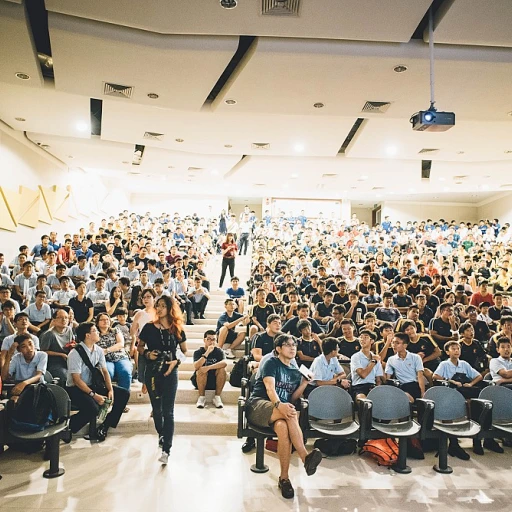
Understanding the Role of AI in HR Communication
The intersection of artificial intelligence and human resources offers a transformative approach to managing communication during cyber incidents. In recent years, organizations have increasingly recognized the potential of AI to bolster effective communication practices, especially under the strain of a cybersecurity incident. AI systems provide invaluable support in navigating the complex dynamics of a cyber crisis, equipping HR teams with robust tools to enhance security incident responses.
AI as a Cornerstone in Cyber Crisis Communication
AI-driven solutions have become a cornerstone of organizations’ communication strategies during cyber security breaches. These technologies offer advanced capabilities for filtering and prioritizing information, ensuring that responding teams and stakeholders receive timely, accurate updates. AI assists in maintaining organized and effective communication channels, crucial for executing a streamlined incident response plan.
Integrating AI in cyber incident communication enhances the organizational ability to manage and disseminate critical information quickly. By automating routine tasks, AI allows HR teams to focus on strategic elements of their crisis communication plan, enabling more agile and adaptive responses to fluctuating circumstances.
Moreover, AI tools provide support in translating technical details for broader audiences. This capability is essential in minimizing misunderstandings during crises, particularly when conveying complex data about security breaches to non-technical stakeholders. By enhancing clarity and speed, AI-driven communication strategies improve the overall efficiency of cybersecurity incident management.
Through continuous monitoring and analysis, AI also plays a critical role in identifying emerging issues that could potentially escalate into a full-blown cyber attack. This proactive approach offers HR teams the insights needed to refine their communication plans and ensure alignment with best incident response practices.
Identifying Key Challenges in Cyber Incident Communication
Challenges in Cyber Incident Communication
In the realm of cybersecurity, effective communication is crucial, yet it comes with its own set of challenges. During a cyber incident, rapid dissemination of accurate information is vital to managing the crisis effectively and maintaining trust with stakeholders. One of the primary difficulties lies in aligning communication priorities with the urgency of the situation. When a data breach occurs, or a cyber attack unfolds, there’s a need to balance speed with accuracy. Misinformation can easily proliferate, potentially exacerbating the situation. The response team must ensure that communication channels are clear and that messages are consistent across the organization. Another challenge is managing the expectations of different stakeholders, which may range from internal teams to external partners and clients. Each group may have specific needs in terms of information and updates during cyber incidents. Mismatches between expectations and communication delivery can lead to dissatisfaction and misalignment within the organization. Security incidents often also include the challenge of technological understanding. Cyber incidents can involve complex technical details that need to be translated into understandable information for all stakeholders. This requires both technical expertise and effective communication skills. Organizations must also contend with the evolving nature of cybersecurity threats. As cyber threats become more sophisticated, incident response plans need frequent updates, and communication protocols must remain flexible to adapt to new challenges. Organizations must establish clear communication protocols to ensure that each team member knows their role in the response efforts. To address these challenges, developing a comprehensive incident response communication plan is essential. This involves preparing for potential crises, training the communication team to handle high-pressure situations, and incorporating AI tools to streamline communication processes. By recognizing these key challenges, organizations can better prepare for effective response communication during cyber incidents.AI Tools Enhancing Communication Efficiency
Leveraging AI Tools for Enhanced Communication During Cyber Incidents
In the realm of responding to cyber incidents, leveraging artificial intelligence tools can significantly enhance communication efficiency and effectiveness. These tools serve a critical role in streamlining communication processes during crisis communications. AI technologies can be integrated into an organization’s existing communication plans to address the challenges of the fast-paced nature of security incidents and the urgency they demand. By employing AI-driven applications, organizations can extract timely insights from enormous data sets, which is pivotal during a cyber crisis.- Automation of Communication Processes: AI can automate routine communication tasks like sending alerts or updates to stakeholders, ensuring consistent and accurate dispersal of information during a cybersecurity incident.
- Data Analysis for Informed Response: AI tools analyze data breaches and other incidents in real-time, providing valuable insights that help the response team understand the scope and impact, facilitating strategic decision-making.
- Predictive Analytics for Crisis Management: Through predictive analytics, AI can forecast potential communication challenges and propose mitigation strategies, thereby allowing organizations to remain proactive rather than reactive.
Implementing AI-Driven Communication Protocols
Utilizing AI to Streamline Incident Response Communication
Implementing AI-driven communication protocols during a cyber crisis can significantly enhance an organization's response capabilities. The integration of artificial intelligence into communication strategies allows for more streamlined, efficient, and effective communication plans, thereby minimizing the potential chaos during a cybersecurity incident. One of the primary advantages of using AI in managing communication is its ability to automate certain tasks. Automation facilitates rapid response times, ensuring that information about data breaches, security incidents, or other cyber issues is disseminated quickly and accurately to all stakeholders. This can play a crucial role in a crisis communication environment, where swift action is essential to mitigate damages. Furthermore, AI technologies can analyze vast sets of data in real time, helping identify the key aspects of an incident. By understanding the critical elements of a security breach, AI tools can assist in crafting communication messages that are relevant and targeted to the needs of specific audiences, whether they are internal teams, customers, or other external parties. To enhance efficiency, organizations should consider implementing AI-powered communication channels, which can support the consistent delivery of messages. These channels could include chatbots for real-time responses or automated emails ensuring stakeholders are kept informed throughout the incident. During a cyber attack, maintaining open lines of communication is vital for effective management of the situation. Moreover, a well-designed AI-driven communication protocol serves as a crucial component of any incident response plan. By incorporating advanced technologies into their strategies, organizations can ensure they have a robust framework for addressing any cyber crises effectively. Ultimately, the incorporation of AI into crisis communications is not a one-size-fits-all approach. It requires tailoring to fit the unique needs and characteristics of the organization. However, by implementing these advanced protocols, there is the potential for substantial improvements in how organizations manage communication during cyber incidents.Training HR Teams for AI-Enhanced Communication
Preparing HR Teams for AI-Enhanced Cyber Communication
Training Human Resources (HR) teams to effectively manage communication during cyber incidents is pivotal. As organizations increasingly rely on Artificial Intelligence (AI) tools to enhance communication efficiency, HR teams need to adapt by developing a comprehensive understanding of these technologies.
Effective communication in the midst of a cybersecurity incident requires HR professionals to collaborate with IT and security teams. This collaboration ensures that response communications are aligned with the organization’s overall cyber security strategy. Additionally, it's crucial for HR to understand the nuances of AI-driven communication tools to facilitate seamless crisis communication during incidents.
Here are some essential steps to equip HR teams for AI-enhanced communication:
- Comprehensive Training Programs: Equip HR teams with the knowledge and skills necessary to use AI tools designed for effective communication.
- Training should include using platforms that streamline communication channels and speed up response times during a cyber crisis.
- Role-specific Scenario Exercises: Conduct incident response simulations tailored to HR responsibilities.
- These exercises should incorporate AI-driven communication protocols to give HR a hands-on experience in managing cyber crisis effectively.
- Access to Up-to-date Resources: Ensure that HR teams have access to the latest resources on cybersecurity and AI technologies.
- This includes understanding legal compliance issues related to data breaches and incident response.
Another key aspect involves identifying and integrating AI tools that support the organization’s communication plan. HR teams should work closely with stakeholders to tailor solutions that address specific communication challenges during security incidents.
Ultimately, training should aim for the HR teams to not only manage communication following a breach but to anticipate potential communications hurdles before they arise. This proactive approach can significantly improve the effectiveness of response communication and mitigate the impact of security incidents on the organization.












